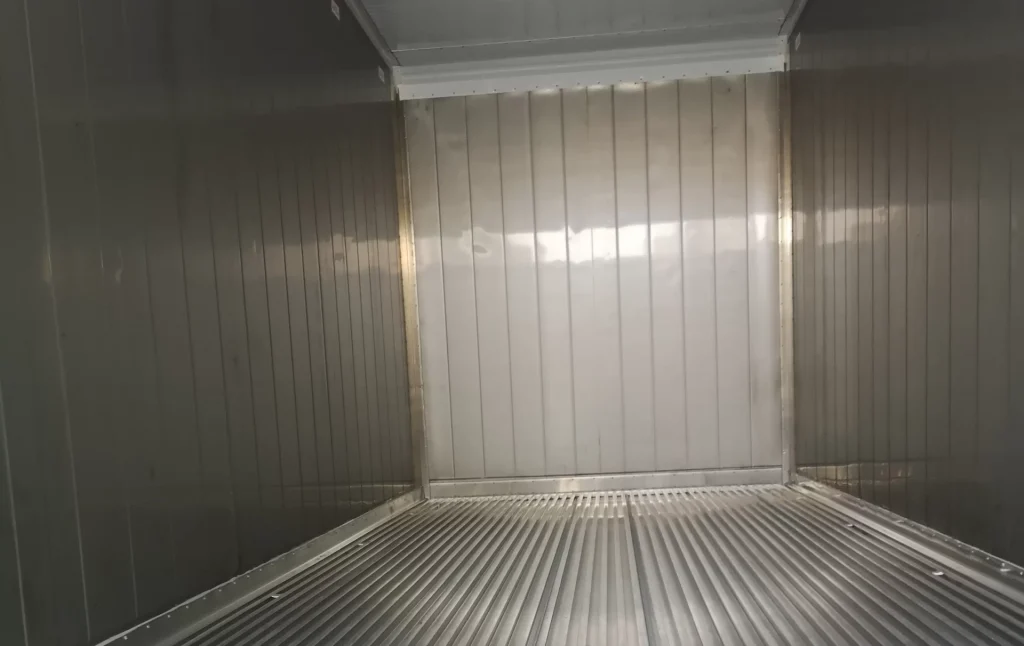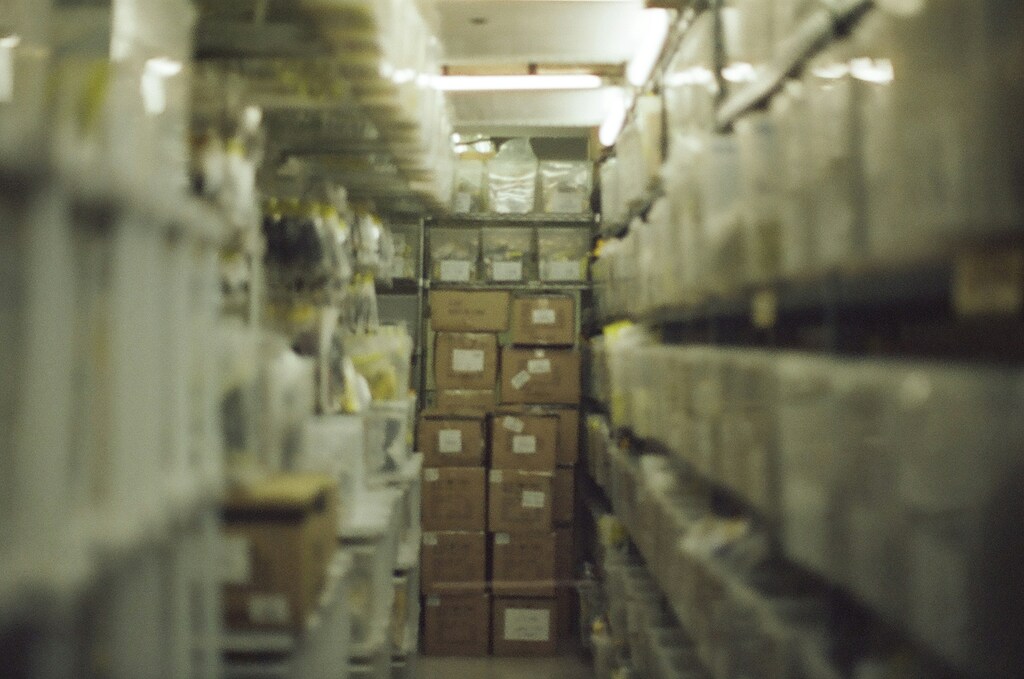Commodities like medicines need an insulated conex box or shipping container to maintain their quality because they are very susceptible to temperature, humidity, and other factors.
Following that matter, insulated conex boxes or shipping containers are becoming a key asset in the pharmaceutical and medical industry, especially for temperature-sensitive storage and transport.
Things like vaccines and medications require precise temperatures, and insulated containers prevent heat/cold exposure during shipping to clinics and storage in remote or outdoor facilities.
From vaccines to lab samples, these boxes help maintain the integrity of delicate materials every step of the way.
Let’s continue reading the article below to find out the things you need to know about an insulated Conex box!
What is an Insulated Container?
Despite their strengths, standard conex boxes or containers cannot meet the shipping requirements for temperature-sensitive products, such as medicines and chemicals, which require a stable environment.
The thin metal walls of standard dry containers, when exposed to external climates, cannot maintain a constant internal temperature.
Insulated conex boxes are commonly referred to as non-operational reefer containers, which are here to be a solution to the problems above, since they can prevent temperature damage during transit.
Insulated containers often have double walls vacuumed to prevent the transfer of heat and cold between the interior and exterior, while the interior is completely sealed to prevent condensation and moisture.
How Do Insulated Containers Work in the Pharmaceutical Industry

The insulation acts as a powerful heat-trapping barrier to maintain a constant temperature inside the container. This was supported by its built-in features like:
Rubber-sealed doors
Think of rubber-sealed doors like a gasket on a vaccine cooler. They’re small, but they play a huge role in keeping contents safe, stable, and sterile.
In the health industry, that seal can be the difference between a viable vaccine and a wasted shipment.
Rubber-sealed doors are critical for insulated conex boxes, where they maintain a controlled environment inside the conex boxes by creating an airtight barrier between the inside and outside environment.
This keeps vaccines, medications, or biologics at consistent temperatures, which is vital for safety and effectiveness.
Lashing rings
Lashing rings are heavy-duty metal rings on the walls, floor, or ceiling of a conex box or container to anchor and secure cargo with straps, ropes, or nets to prevent shifting during transit.
Pharmaceuticals are often shipped in fragile packaging (glass vials, ampoules, blister packs). Without lashing rings, boxes or pallets can slide, fall, or topple during truck movements, bumpy roads, and ship swaying.
Corner castings
Corner castings are the solid steel blocks located on the eight corners of a Conex box. Each has standardized holes designed for lifting, locking, stacking, and securing containers.
They are essential for safe handling, stacking, and transport, critical when moving high-value, temperature-sensitive medical cargo.
Corner castings provide safe lifting points without damaging the structure or disrupting the insulated shell or sensitive contents inside when people move these steel boxes.
Forklift pockets
Forklift pockets are durable steel openings on the bottom sides of a Conex box that allow forklift tines to slide in and lift the container.
They allow for safe, easy, and efficient movement of the container, especially in tight spaces or urgent situations.
In pharmaceutical settings like distribution hubs, labs, or hospitals, the use of forklifts are commonplace to move containers.
When speed is essential, such as during vaccine rollouts or disaster relief, forklifts can quickly position insulated containers and load them onto trucks or platforms without cranes.
Locking bars/lockbox
Insulated Conex boxes in the pharmaceutical and medical industry often hold high-value, life-saving, and temperature-sensitive materials.
It makes them a prime target for theft, tampering, or unauthorized access.
Therefore, you need a locking bar or a lockbox. It is a heavy-duty steel housing welded over or around the padlock area on the container doors.
It hides and protects the lock itself, making it harder to cut or break, resistant to tampering, and more secure against bolt cutters or crowbars.
The Benefits of Using Insulated Conex Boxes

Precise Temperature Control
Insulated containers help stabilize internal temperature, even in extreme external environments. Many pharmaceuticals require strict cold chain conditions, like:
- Vaccines: 35.6°F to 46.4°F
- Insulin: 35.6°F to 46.4°F
- Some biologics: -4°F or even -94°F
Reliable Transport & Distribution
Whether transport & distribute with truck, ship, or plane, insulated conex boxes can prevent spoilage, reduce exposure to sunlight or humidity, and ensure consistent temperature through long-distance shipping.
On-Site Storage at Clinics, Hospitals & Remote Areas
The insulated Conex boxes provide secure, climate-controlled storage in urban, rural, or emergency zones, ideal for temporary clinics or field hospitals, mobile vaccination units, and storage during facility construction or renovation.
Safe Storage for Medical Devices & Equipment
Diagnostic machines, test kits, and electronic devices can suffer damage from moisture and eat/cold shock. Insulated conex boxes keep internal environments stable and dust-free.
Emergency & Disaster Relief Use
In response to disease outbreaks or natural disasters, insulated containers can deliver life-saving vaccines and medication, then act as mobile medical storage or pop-up labs.
Challenges of Insulated Containers
The biggest problem in shipping and storing sensitive goods like pharmaceutical and medical products is maintaining the temperature inside the conex boxes.
They must be safe from contamination and external weather conditions during the shipping process. To solve that problem, an insulated conex box is very important in the industry’s supply chain.
However, the materials used to insulate and protect conex boxes, such as waste, by-products, packaging, and coolants, are often not recyclable.
Oftentimes, they end up in landfills and incinerators, where toxic chemicals cause environmental damage.
More and more attempts are being made to produce recyclable packaging materials and coolants so that they can be disposable, and then released back into the air.
Types of Insulated Containers
When it comes to controlling temperature fluctuations and preventing condensation, insulated conex boxes are the perfect solution.
These are Tradecorp’s insulated conex boxes that offer optimal protection for your pharmaceutical and medical products:
20′ High Cube Insulated Container
We have the 20’ High Cube Insulated Container, which can be a perfect choice for transporting light and voluminous pharmaceutical and medical cargo, ensuring your transportation needs are met effectively.
It has a high cube size that offers generous space, accommodating taller cargo that may not fit in standard containers.
Our insulated containers are compliant with the ISO standard and equipped with several features to ensure the safety and easy movement of the cargo during the journey.
They also have rubber-sealed doors to help prevent moisture and contaminants from entering, while the locking bars offer protection for the door handles and securely lock the container.
40′ High Cube Insulated Container
The Tradecorp’s 40’ High Cube Insulated Container is perfect for you if you are looking for a bigger option to meet your needs.
With this container, you can store and transport your pharmaceutical and medical products over short distances while still maintaining their temperatures without fear of weather conditions.
It comes with a T-Bar floor to allow air circulation to the bottom of the cargo. That way, your pharmaceutical and medical products will have a relatively stable temperature on all sides.
45′ High Cube Side Opening Double Door Insulated Container
Tradecorp’s 45’ High Cube Double-Door Insulated Containers are the ultimate solution for businesses or individuals in need of functional and durable storage or workspace.
This innovative product has multiple features to ensure maximum protection and convenience, such as fireproof EPS, custom ventilation, pipe mounting flange, side doors, double doors, and many more.
The side and double-end doors provide multiple entry and exit points, ensuring easy access to stored materials or equipment.
This makes it easy to load and unload materials, even if the container is full of cargo.
The double-end doors also make it easy to access materials from both ends of the container, further enhancing convenience and flexibility.
The cargo doors at one end are usable as an extra space since there is a partition to separate the main storage.
Conclusion
The function of an insulated conex box in pharmaceutical and medical applications is to control the temperature inside, maintain product quality, protect the product against external factors, and ensure cost-efficiency. If you are looking for an insulated Conex box, check out our products!
Standing at the top of the industry, Tradecorp is widely known for its high-quality conex boxes open to so many creative applications. Fill out our quote form, and we’ll guide you in finding the best conex boxes for your business goals!

